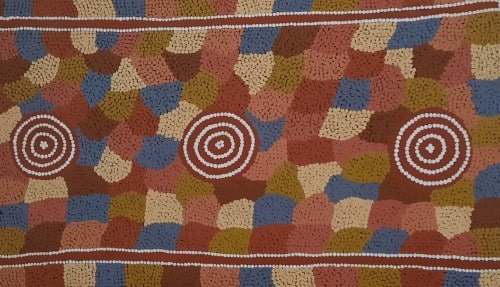Nicolas Rothwell | August 24, 2007
Article by Nicolas Rothwell in the Australian about the life of Grahame Leslie Walsh, rock art scholar, who died in Brisbane, August 18 2007, aged 62.
Quoted from the article:
But the wider continent beckoned. During the mid-1980s he prepared a lavish bicentennial volume, Australia’s Greatest Rock Art. In its preface, he noted the final stages of his field work had involved 60,000km of travel, much by four-wheel-drive vehicle, but “trail bikes, open boats, charter vessels, commercial aircraft, light aircraft, seaplanes and helicopters were used to reach some relatively inaccessible areas”.
These trips took Walsh to the Kimberley and it was in this remote region that he encountered the two art traditions that would dominate his later years. The Bradshaw rock paintings are ancient and extend across an arc of the north Kimberley. They depict graceful figures engaged in display or hunt.
The Wandjina paintings, much more recent, mark the last crescendo of Kimberley Aboriginal art. In their best-known form, they show round, wide-eyed faces surrounded by ghostly halo circles.
To Walsh, both these traditions had an intense appeal. Backed by private sponsors, he prepared the first large book on the Bradshaws. It appeared in 1994.
By this stage, Walsh was becoming a figure of notoriety in the academic rock art world. It was plain he was a field photographer of brilliance and a persistent finder of lost sites. But he was without formal qualifications and his somewhat controversy-courting ideas about pre-Aboriginal civilisations in the far north triggered a storm of predictable fury. The result was a damaging split between Walsh and the academy: damaging, arguably, for both sides.
Walsh had found a fresh forum for his ideas and a wider audience. Perhaps, in all the twisting course of his life, no turn was stranger than the one that brought him into contact, and friendship, with the leaders of Australia’s legal and corporate worlds.
Unusual backers began funding his research. He was especially close to Dame Elisabeth Murdoch and Maria Myers, to both of whom he dedicated his masterpiece, Bradshaw Art of the Kimberley, a vast, unclassifiable book, part photographic essay, part speculative anthropology, bound in purple mock-crocodile skin. A photograph of the author glowers from the frontispiece: he sits, a pair of cameras at the ready, beside a Bradshaw panel, wearing his favourite battered black Akubra, souvenired from the aftermath of a bar-room brawl in Camooweal.
It is clear today that 2000, when the “purple crocodile” was published, marked the moment of Walsh’s greatest difficulty as well as the first pinnacle of his public renown.
Protests from Kimberley Aboriginal groups angered by his interpretation of the Bradshaw style redoubled; rock art experts resented his refusal to share his data or provide access to sites he knew.
But the overwhelming detail collected in Bradshaw Art and the depth of his knowledge of the tradition made their own case. It became impossible to deny that Walsh, through his solitary efforts, had uncovered a vast, half-forgotten realm of indigenous art.
His attitudes to the Aboriginal domain were also shifting. He loved old Aboriginal men, he haunted them and soaked up their knowledge: he revered their art and the complexities of their belief systems. It was hard not to regard him as a kind of white Aborigine, superbly fitted to the bush world, ill-adapted to Western ways, alienated from and scornful of consumer society.

